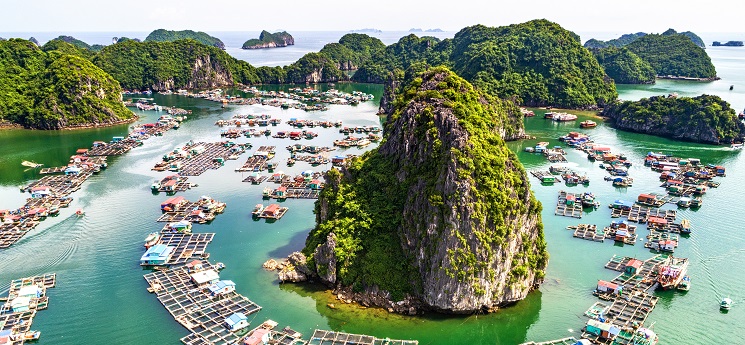Around one third of the world’s natural wonders are under threat from climate change, according to a new report published by UNESCO’s World Heritage advisory body the International Union for Conservation of Nature (IUCN).
The report also assessed Australia’s Great Barrier Reef as having a ‘critical’ outlook for the first time.
The third instalment of the IUCN World Heritage Outlook (which builds on previous reports released in 2014 and 2017) tracks whether the conservation of the world’s 252 natural World Heritage sites is sufficient to protect them in the long term.
IUCN director general Bruno Oberle said the latest report found that climate change has overtaken invasive species as the top threat to the world’s natural wonders.
“Natural World Heritage sites are amongst the world’s most precious places, and we owe it to future generations to protect them,” Mr Oberle said.
“The IUCN World Heritage Outlook 3 reveals the damage climate change is wreaking on natural world heritage, from shrinking glaciers to coral bleaching to increasingly frequent and severe fires and droughts.
“As the international community defines new objectives to conserve biodiversity, this report signals the urgency with which we must tackle environmental challenges together at the planetary scale.”
Among the83 natural World Heritage sites now threatened by climate change is the Great Barrier Reef, where ocean warming, acidification and extreme weather have contributed to dramatic coral decline and, as a result, decreasing populations of marine species.
In the Cape Floral Region protected areas of South Africa, climate change has exacerbated the spread of invasive species, while the Pantanal Conservation Area of Brazil was badly damaged by the unprecedented 2019-2020 wildfires.
In Kluane Lake, located in a world heritage site in Canada and the USA, the rapidly melting Kaskawulsh Glacier has changed the river flow, depleting fish populations.
The IUCN report found that 16 world heritage sites have deteriorated since the last report in 2017, while only eight have improved.
The lower tourism numbers due to the COVID-19 pandemic this year, which may have been expected to result in a positive effect, in fact ended up having a negative effect.
The report found that lower tourism numbers meant that many sites suffered significant revenue loss, which resulted in a higher level of illegal activities with fewer staff on hand to prevent this from happening.
Former Australian of the Year Professor Tim Flannery said the report emphasised the very real threat posed by climate change.
“This is yet another warning sign. Climate change is the number one threat to the unique places and wildlife that we as Australians cherish,” he said.
How many of the 252 natural World Heritage listed sites have you visited? Are you worried that some will be destroyed before you get the chance to see them in their prime?
If you enjoy our content, don’t keep it to yourself. Share our free eNews with your friends and encourage them to sign up.
Related articles:
https://www.yourlifechoices.com.au/travel/travel-resources/dont-leave-home-without-this-map
https://www.yourlifechoices.com.au/travel/news-travel/survey-reveals-the-future-of-travel
https://www.yourlifechoices.com.au/travel/news-travel/worlds-most-expensive-cities-revealed

